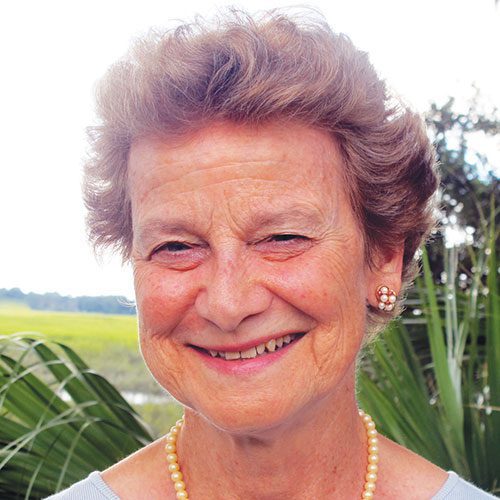 Years ago, when a friend told me that he and his wife were cosmologists, my uninformed reply was something like, “Oh, do you all have a salon together?”
Years ago, when a friend told me that he and his wife were cosmologists, my uninformed reply was something like, “Oh, do you all have a salon together?”
With only a patient, brief eye roll, he explained that they were not cosmetologists, i.e. beauticians trained to provide cosmetic treatments to hair, skin, and nails, but cosmologists, as in “the cosmos.” Cosmology, I learned, is a branch of metaphysics that deals with the nature of the universe and explores its natural order, or is a theory or doctrine describing that order. It also can be a branch of astronomy that deals with the origin, structure, and space-time relationships of the universe. If that sounds heady, it is, but after a bit of brief, tip-of-the-iceberg background on the science, we’ll get to the fun, practical stuff about it.
In case you can’t tell, the stay-at-home decree has given me time to indulge my curiosity about questions that my pre-pandemic “normal” schedule left no time to hop off the “go go go-do do do” gerbil wheel and explore. One of those has always been where I fit in the cosmos.
I know. It’s a bit heavy if you’re reading Lowcountry Weeklyfirst thing in the morning over a cuppa java. But freshen that cup, boost your caffeine level, and stick with me. It gets easier. Especially if you have the capacity to suspend disbelief briefly and you have a curious mind. If you do, then welcome to the club. Mine comes directly from my dad, who began reading to my sister and me from his monthly issues of Science News Letter when we were both preschoolers. While thankfully my mom shared tales of Winnie the Pooh, Mary Poppins, and A Child’s Garden of Verses, still favorites of mine today, my curious-minded father was ever relating the latest cosmological info on as-yet-unproven scientific theories, quantum physics, and mysteries of the night sky.
As a result, whenever I stargaze, I’m lost in wonder.
Most religions and cultures embrace some sort of cosmology to interpret the nature of the universe and its beginnings. Though the concept flies in the face of some religious beliefs, a leading cosmological ideology is the Big Bang Theory, which proffers that the universe began with an enormous explosion that sent matter and energy flying in all directions. The logical next step from that is, I believe, spiritual, not religious, and definitely scientific.
Cosmologists want to know about the big stuff. A good example is brilliant theoretical physicist andNew York Timesbestselling author of A Brief History of Time, Stephen Hawking, who at the time of his death was director of research at the Centre for Theoretical Cosmology at the University of Cambridge. His curiosity may be one factor that helped him to live with Lou Gehrig’s Disease for 50 years, way past his normal predicted lifespan. Revered for his work, he perhaps simply didn’t have time to stop asking questions and exploring theories.
One reason the Star Trekseries became so popular concerned the various cosmologies the show depicted, including concepts of space, time, and the meaning of life. Those…and the dashing Patrick Stewart and ever-fascinating Spock, of course!
Pulitzer Prize winner Carl Sagan popularized science – cosmology in particular – in his 1980 award-winning bestseller, Cosmos.The universe, he declared, is not simply stars and planets, but a link between all things. A New Age mantra declares, “We are all one.” Turns out that, according to cosmologists, everything is connected. People, animals, plants, planets, stars. Sagan reminded readers that “we are all star stuff.” The universe was not created for our race to thrive, but for us to realize that we are a product of something much larger.
A number of years ago on a still night, I spied a galaxy through a friend’s powerful telescope. Miniscule on my own planet, in my own galaxy, I had a tough time wrapping my mind around the idea of what it was, its size and distance from the Earth, where I stood on a patch of Kentucky bluegrass.Shortly thereafter, I read Sagan’s sequel to Cosmos,the 1994 book Pale Blue Dot: A Vision of the Human Future in Space, which provided an answer to the question about my size as compared to that of the universe. From deep space, our planet looks for all the world like a pale blue dot, with humans weighing in about the size of dust motes in a sunbeam. Think about it.
A well-worn meme states, “Curiosity killed the cat.” At this point in my life, I beg to differ. And I’m not alone. Following curiosity can provide answers to the bigquestions. You know, the ones that you may not find results for right away, but that must be asked to set you on a path of discovery. Wildly popular self-help guru Deepak Chopra contemplates the upside of harnessing the power of curiosity.
“We may think of curiosity as a charming trait of childhood,” he professes, “but in fact our drive to know and experience what is unknown and untried is the fundamental force of spiritual awakening – of consciousness becoming aware of its true nature. The impulse to discover and explore is how we change doubt and the fear of the unknown into joy, freedom and appreciation. Our biological rhythms are the symphony of the cosmos, music embedded deep within us to which we dance, even when we can’t name the tune.”
So there’s the connection between curiosity and the cosmos.
Should you have a desire to read further about cosmology – and there’s so much more to titillate the mind – watch the YouTube video “Voyager 1: 1977-2019 (The Journey Continues)”, a tribute to Carl Sagan.
And then, on a clear Lowcountry evening, when the moon is new, the night is dark, and the Milky Way stretches across the heavens, look up and be amazed, in awe of that stretching-to-infinity space and that blanket of stars you can see, and allow yourself to imagine all that may lie beyond. All that you cannot see. Marvel at the size of our tiny planet and its place in the universe, and remember, we’re connected to all that and to the earth and to each other.
May the experience be a reminder to be always kind to your fellow humans and to the pale blue dot where we live. Especially now.








